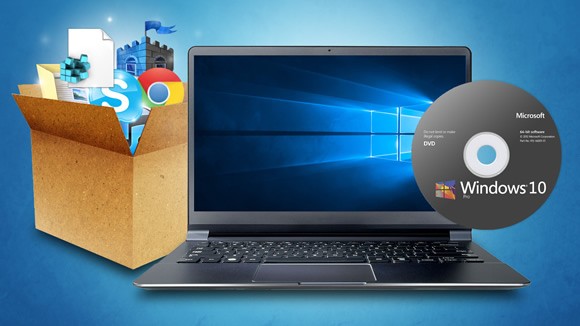If you have a valid Windows 7 or Windows 8/8.1 license, you can upgrade to Windows 10 for free. However, once you upgrade you can do a clean install of Windows 10.
According to Microsoft, you first need to upgrade to Windows 10 in order for your product key to be converted. That done, you can do a clean install of Windows 10 using your new key.
In this article we will teach you how to clean install Windows 10 on your computer after successfully upgrading it to Windows 10 and converting your old product key to Windows 10.

Preparation:
There are two ways you can do a clean install of Windows 10. The first is by using the reset feature of the operating system itself and the second is by formatting your computer’s hard drive.
Whichever method you use, back up your files first, as all your files will be lost. Here’s what to save before formatting your computer hard drive.
How to do a clean install of Windows 10 (Option 1)
Like Windows 8, Windows 10 offers a reset feature that completely removes all files from the system partition and cleanly installs Windows 10 on your computer.
To get started, open the Start Menu, click “Settings” and then “Update and Security“
Then click the “Recovery” option and click the “Getting Started” button of the Restore PC option.
By doing so, it will offer you two options “Keep my files” and “Remove all”. Since you want to do a clean install of Windows 10, choose “Remove All” to begin the installation process.
It will also ask if you want to remove files from all drives or just from the Windows drive. It is safest to select the option that removes only files from the Windows drive.
Finally, you must choose whether you want to do a quick or complete format. Choose the option “Only remove my files” as the second option is too time consuming and unnecessary in this case.
Okay, now it will display a summary of everything that will be done on your computer. Click “Reset” to perform the hard disk formatting process and clean installation of Windows on your computer.
How to do a clean install of Windows 10 (Option 2)
If you still prefer to use the old Windows installation method, the first thing I recommend you do is to write down the new Windows 10 product key. To do this, use the free program ProduKey.
To clean install Windows 10 using this method, you must have the Windows 10 installation media. Download Windows 10, and create an operating system installation media.
After you create the Windows installation media, insert the Windows 10 installation flash drive into your computer, restart the computer, and boot it from the flash drive to start Windows 10 installation.
To boot the computer from the USB stick, you need to press a key (F2, F8, F12, Del, etc.) on the first boot screen of your computer and change the boot order in the BIOS setup to “USB”.
Once Windows installation starts, simply follow the installation steps and when prompted enter the product key you noted earlier to proceed with the Windows installation.
Note: If you did not note the product key, click “Ignore” to continue the installation. Windows will identify the hardware ID of your computer and will activate Windows 10 as soon as you are online.
When you get to the next screen, choose the “Custom Install” option and in the next step select your Windows partition. Note that all data stored in the selected partition will be deleted.
Lastly, after selecting the partition where Windows 10 will be installed, you simply proceed with the installation of Windows. It will be activated automatically after installation when you are online.
Once the operating system is installed, you should install basic programs for computer operation, such as antivirus, office and others. See our full list of essential programs here.
Note: If selecting the partition during installation displays the message “Windows cannot be installed to disk. The selected disk is in GPT partition format ”, see below how to solve this.
1. Cancel the installation and in the program “Rufus” select the option “GPT partition for UEFI” in the “Partition type and target system” field.
2. If the error still appears, read the article: How to install Windows in UEFI mode.